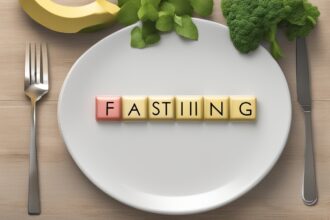Intermittent fasting (IF) has gained immense popularity as a powerful tool for weight loss, offering a sustainable approach to slimming down without the pitfalls of crash diets. Unlike traditional calorie-restrictive plans, sustainable slimming with intermittent fasting focuses on when you eat rather than what you eat, making it a flexible and long-term solution for many. This post explores how intermittent fasting can help you achieve lasting weight loss, its benefits, and practical tips to integrate it into your lifestyle.
What Is Sustainable Slimming with Intermittent Fasting?
Sustainable slimming with intermittent fasting is a weight loss strategy that alternates between periods of eating and fasting to promote fat loss while preserving muscle mass. Unlike fad diets that often lead to yo-yo weight gain, IF encourages a balanced approach by regulating hunger hormones and improving metabolic health. Common methods include the 16/8 plan (fasting for 16 hours and eating during an 8-hour window) and the 5:2 method (eating normally for five days and restricting calories on two non-consecutive days). By focusing on timing, IF helps create a calorie deficit naturally, making it easier to maintain over time.
This approach is particularly effective because it doesn’t require drastic food restrictions, allowing you to enjoy your favorite meals within designated eating windows. For more insights on how IF compares to other diets, check out our detailed guide on Weight Loss Diets Compared.
Why Intermittent Fasting Promotes Sustainable Weight Loss
Intermittent fasting stands out for sustainable slimming because it works with your body’s natural rhythms. During fasting periods, insulin levels drop, prompting the body to burn stored fat for energy. Additionally, fasting increases levels of human growth hormone (HGH), which supports fat loss and muscle preservation. Studies also show that IF can reduce appetite by regulating ghrelin, the hunger hormone, making it easier to avoid overeating.
Unlike restrictive diets that slow metabolism, IF can enhance metabolic flexibility, helping your body switch between burning carbs and fats efficiently. This adaptability prevents the metabolic slowdown often seen in long-term calorie restriction, ensuring that weight loss remains consistent. To learn more about metabolism and weight loss, explore our post on Boosting Your Metabolism Naturally.
Health Benefits Beyond Weight Loss
While sustainable slimming with intermittent fasting is primarily associated with weight loss, it offers numerous health benefits that contribute to overall well-being. Fasting has been shown to improve insulin sensitivity, reducing the risk of type 2 diabetes. It also promotes cellular repair through autophagy, a process where cells remove damaged components, potentially slowing aging and reducing inflammation.
Moreover, IF can enhance brain health by increasing the production of brain-derived neurotrophic factor (BDNF), a protein linked to improved cognitive function and mood regulation. These benefits make intermittent fasting not just a weight loss tool but a holistic lifestyle choice. For additional health tips, read our article on Healthy Eating Habits for Life.
How to Start Intermittent Fasting for Sustainable Slimming
Getting started with sustainable slimming through intermittent fasting is simpler than you might think, but it requires a gradual approach to avoid overwhelm. Begin with a beginner-friendly method like the 16/8 plan, where you fast for 16 hours (including sleep) and eat during an 8-hour window, such as from noon to 8 p.m. Start by skipping breakfast or delaying your first meal, and ensure you stay hydrated during fasting periods with water, herbal tea, or black coffee.
Focus on nutrient-dense foods during eating windows to support your body’s needs. Include lean proteins, healthy fats, and complex carbohydrates to maintain energy levels and prevent cravings. Avoid jumping into extreme fasting schedules right away—ease into it over a few weeks to allow your body to adapt. If you’re new to fasting, our guide on Beginner’s Guide to Healthy Weight Loss offers more actionable tips.
Common Challenges and How to Overcome Them
While sustainable slimming with intermittent fasting is effective, it’s not without challenges. Hunger pangs, irritability, and fatigue are common during the initial adjustment period. To manage hunger, drink plenty of water and distract yourself with light activities. If irritability strikes, ensure you’re getting enough sleep, as fasting can exacerbate fatigue if rest is neglected.
Social eating can also be tricky, especially if meals fall outside your eating window. Plan ahead by adjusting your fasting schedule on social days or politely declining food while explaining your goals. Over time, your body will adapt, and fasting will feel more natural. For strategies on mindful eating, check out our post on Mindful Eating for Weight Loss.
Tips for Long-Term Success with Intermittent Fasting
To ensure sustainable slimming with intermittent fasting, consistency and flexibility are key. Stick to a fasting schedule that fits your lifestyle—don’t force yourself into a rigid plan that causes stress. Listen to your body; if you feel overly fatigued or unwell, adjust your eating window or consult a healthcare professional.
Combine IF with regular physical activity for optimal results. Light exercises like walking or yoga during fasting periods can enhance fat burning, while strength training during eating windows helps preserve muscle mass. Lastly, track your progress without obsessing over the scale—focus on how you feel, your energy levels, and non-scale victories like improved clothing fit. Remember that sustainable weight loss is a journey, not a race.
Disclaimer: The information provided in this post is for educational purposes only and should not be considered medical advice. Intermittent fasting may not be suitable for everyone, including pregnant or breastfeeding individuals, those with certain medical conditions, or a history of eating disorders. Always consult a healthcare professional or registered dietitian before starting any new diet or fasting regimen to ensure it aligns with your personal health needs.
References
- Harvard Health Publishing – Intermittent Fasting: Surprising Update
- Mayo Clinic – Intermittent Fasting: What You Need to Know
- New England Journal of Medicine – Effects of Intermittent Fasting on Health, Aging, and Disease
- NCBI – Intermittent Fasting and Weight Loss: Systematic Review
- WebMD – Intermittent Fasting Overview
- CDC – Healthy Weight Loss Strategies
This content is for informational purposes only and not a substitute for professional advice.






